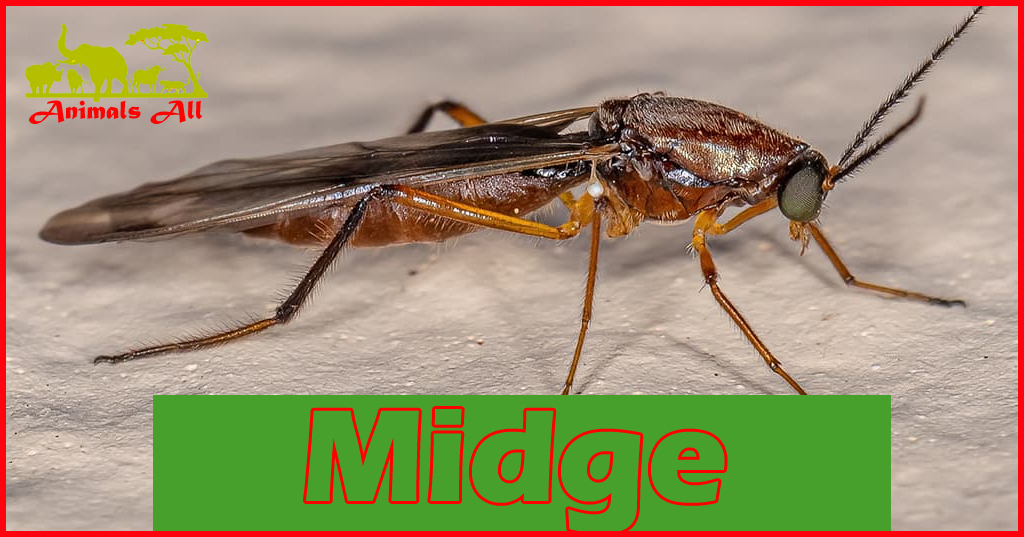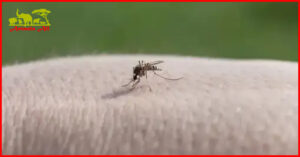
There is a small flying insect called “midge” that can bite you to the point of “dizziness”
In the hot summer, many people go to the park and enjoy the breeze after dinner. But in less than ten minutes, they feel itchy down there. When they look closely, they are shocked! Stunned! The big white legs are instantly covered with N big red spots. Looking at this “crime scene”, it is even more poisonous than mosquitoes! What is it that is so vicious? Let’s know about midge.

This small black insect , commonly know as “small bite”, is scientifically call “midge”. Midges belong to the phylum Arthropoda . Midges can not only cause direct harassment and harm to humans and animals through biting, but also spread a variety of pathogens, such as bacteria, viruses and parasites, through blood-sucking activities, and cause corresponding diseases. Therefore, midges are important vector insects that are closely related to human and animal diseases.
Adult midges
Adult midges are small, brown or black, about 1-4 mm long. The pair of compound eyes and a pair of simple eyes. Antennae are filamentous, long and hairy, and divided into 13-15 segments. The mandibles have 5 segments, the beak is short, and the female is a piercing-sucking type. The thorax is divide into three segments. With the mesothorax being the most developed, and a shoulder pit on each side of the front. The wings are short and wide, with blunt ends. The two wing veins near the front edge are very thick. There are fine and coarse hairs on the wings, and some wings have dark spots and white spots. The wings overlap and cover the abdomen when at rest. There are three pairs of legs, which are relatively develop, and the abdomen has 10 segments. The female has a pair of cerci at the end.

There are 5,360 know species of midges in the world. Including 1,224 to 1,530 species of Culicoides , 133 species of Lepioidea, 124 species of the subgenus Ceratoides, and 1 species of Macedonia . Blood-sucking midges are a general term for midges in the family Ceratidae that can sting humans, livestock, and other animals. Blood-sucking midges are important medical insects . There are 1,503 know species of blood-sucking midges in 4 genera worldwide, including the genera Culicoides, Lepioidea , Lepioidea, and Macedonia. There are 1,247 know species of Culicoides. Accounting for 23.3% of the known species of Ceratidae insects in the world and 83% of the known 4 genera of blood-sucking midges.
In China, midges appear from May to August in the north and from April to October in the south. They reproduce mainly in moist, soft, humus-rich soil, ponds, tree holes, swamps, manure pits and sewage ditches near residential areas.

Two types of damage can occur at the site of a midge bite:
① In the rapid-onset wheal, there is a small dot-shape wound in the center of the midge bite. After being bitten, there is an immediate itching sensation. The wheal and itching reach a peak within half an hour and disappear within 24 hours without leaving any trace.
② Delayed wheal: 12 to 24 hours after the bite, edema erythema occurs. Then turns into wheal, with mung bean-sized bruises or papules in the center , and a few develop blisters. Which can disappear after 4 to 5 days or even more than a month, leaving pigmentation spots. People who are bitten by a large number of midges or have idiopathic properties may develop angioedema, systemic wheals , and even large bruises. Erosion , exudation, or secondary infection are often caused by scratching and other irritations, and some people develop eczema. Some patients have nodular prurigo-like lesions.
The lesions mostly occur in exposed areas, especially the calves, ankles, insteps and forearms. In people who sit or lie outdoors, they may develop lesions on the face and ears.

Precautions
(i) Improve environmental sanitation: regularly remove decaying matter from wetlands, stables, etc., and remove weeds from ponds and puddles to eliminate or reduce breeding grounds.
(ii) For the breeding sites within 100~200m around the residential area, such as forest wetlands, ponds and ditches, 0.5% γ-666 solution can be spray at 60~100m/m2, once a month.
(III) Personal protection: Mosquito repellent has a repellent effect on midges; apply it once on the exposed part and the repellent effect can last for 4 hours.

